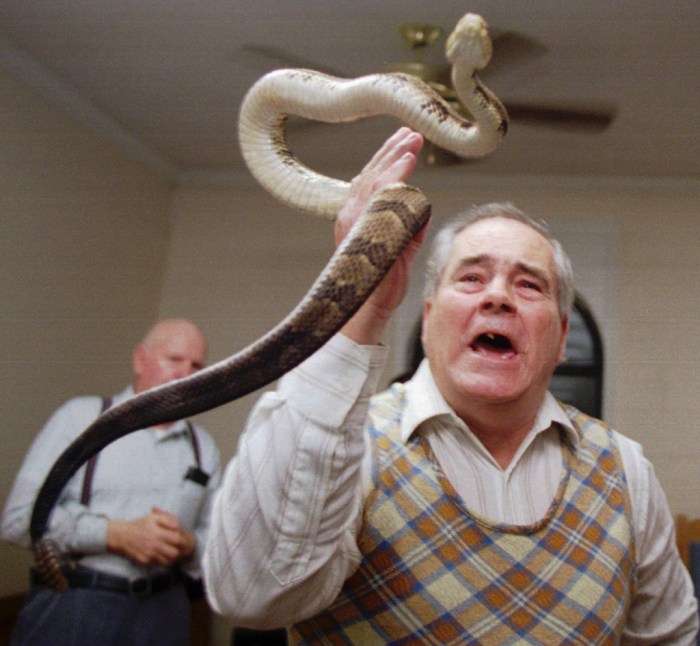
How to handle his snake yumi sin and fit kitty – Navigating the complexities of keeping a snake and a cat under the same roof requires careful planning and understanding. From comprehending their natural behaviors to implementing proper handling techniques, this guide will equip you with the knowledge and strategies to foster a safe and harmonious coexistence between these fascinating creatures.
Understanding the natural instincts and behaviors of snakes and cats is paramount. Recognizing potential conflicts and the importance of proper supervision and socialization will lay the groundwork for successful interactions.
Understanding Snake and Cat Interactions
Understanding the natural behaviors and instincts of snakes and cats is crucial for fostering a harmonious relationship between these two species. Snakes are predatory reptiles driven by instinct to hunt and consume smaller animals, while cats possess an innate curiosity and predatory nature.
These contrasting instincts can lead to potential conflicts if not properly managed.
Proper supervision and socialization play a vital role in mitigating risks and fostering a positive coexistence between snakes and cats. Introducing these animals gradually under controlled conditions allows them to become accustomed to each other’s presence and behaviors, reducing the likelihood of unexpected confrontations.
Natural Behaviors and Instincts
- Snakes are solitary creatures with a strong instinct to hunt and consume smaller animals. They rely on their keen senses, including heat detection and chemical cues, to locate prey.
- Cats are natural predators with a strong prey drive. They exhibit playful and curious behaviors, often stalking and chasing smaller animals, including snakes.
Potential Conflicts
- Snakes may perceive cats as potential prey, leading to defensive or aggressive behavior.
- Cats may view snakes as toys or threats, triggering their predatory instincts and leading to confrontations.
Importance of Supervision and Socialization
- Supervised interactions allow both animals to become familiar with each other’s behaviors and reduce the risk of misunderstandings.
- Socialization through gradual exposure and positive reinforcement helps cats learn to respect snakes and avoid confrontations.
Handling a Snake Safely

Handling a snake can be a rewarding experience, but it’s crucial to do so safely. Non-venomous snakes, while not life-threatening, can still bite if they feel threatened. Understanding proper handling techniques and using the right equipment minimizes the risk of injury to both the handler and the snake.
Using a Snake Hook or Tongs
The safest way to handle a snake is to use a snake hook or tongs. These tools allow you to maintain a safe distance from the snake’s head while providing control over its body. Snake hooks are typically used for larger snakes, while tongs are better suited for smaller ones.
Potential Risks and Avoidance
- Bites:Snakes may bite if they feel threatened. Avoid handling them if they’re displaying defensive behaviors like hissing, coiling, or flattening their head.
- Strikes:Snakes can strike quickly. Keep your distance and avoid making sudden movements that could startle them.
- Constriction:Some snakes can constrict their prey. Handle them firmly but gently to prevent them from wrapping around your arm.
- Venom:While non-venomous snakes don’t have venom that can cause serious harm to humans, their bites can still be painful. Wash the bite area thoroughly with soap and water.
Handling a Cat Safely: How To Handle His Snake Yumi Sin And Fit Kitty

Cats are independent creatures with a unique body language that can be difficult to interpret. To safely handle a cat, it’s essential to understand their behavior and approach them with respect.
When approaching a cat, always do so slowly and calmly. Avoid making direct eye contact, as this can be seen as a threat. Instead, approach from the side and allow the cat to come to you. If the cat is relaxed, it will likely approach you with its tail held high and its ears forward.
Body Language Signs
Pay attention to the cat’s body language to gauge its mood. Signs of a relaxed cat include:
- Tail held high and slightly curved
- Ears forward and relaxed
- Body relaxed and not tense
Signs of a fearful or aggressive cat include:
- Tail held low and tucked under the body
- Ears flattened against the head
- Body tense and arched
Calming and Restraining a Cat, How to handle his snake yumi sin and fit kitty
If a cat becomes agitated, remain calm and avoid sudden movements. Slowly back away and give the cat space. If necessary, you can try to calm the cat by speaking softly or offering it a treat.
To restrain a cat, wrap it gently in a towel or blanket. This will help to prevent the cat from scratching or biting. Hold the cat firmly but gently, supporting its head and neck. Do not squeeze the cat too tightly, as this can cause discomfort.
Knowing how to handle your snake yumi sin and fit kitty can be a daunting task, but with the right information and preparation, it can be a rewarding experience. To ensure a safe and enjoyable interaction, it’s important to learn how to properly handle your snake yumi sin and fit kitty.
For more detailed guidance, check out this helpful article: how to handle his snake yumi sin and fit kitty . This resource provides valuable tips and techniques to help you handle your snake yumi sin and fit kitty with confidence and ease.
Integrating Snake and Cat in the Home

Introducing a snake and a cat to each other requires patience, gradual exposure, and a safe environment. By following these steps, you can create a harmonious home for both animals.
If you’re looking for tips on how to handle his snake yumi sin and fit kitty, there’s a great resource available online at how to handle his snake yumi sin and fit kitty . This guide provides detailed instructions on how to safely and effectively handle your snake and kitty, ensuring their comfort and well-being.
Tips for Introducing a Snake and a Cat
Start by keeping the animals separate in different rooms with their own food, water, and litter boxes. Gradually introduce them to each other’s scents by swapping their bedding or toys. This allows them to become familiar with each other’s presence without direct contact.
Supervised Interactions
Once they have become comfortable with each other’s scents, begin supervised interactions. Keep the snake in a secure enclosure and allow the cat to observe it from a distance. Gradually increase the duration and proximity of these interactions under your supervision.
Creating a Safe Environment
Provide separate hiding places and feeding areas for both animals to prevent competition or stress. Ensure the snake’s enclosure is escape-proof and has a secure lid. Supervise all interactions and intervene if either animal shows signs of aggression or discomfort.
Learning to handle his snake yumi sin and fit kitty can be a great way to improve his relationship with his pet. For example, handling his snake yumi sin and fit kitty can help him to learn how to communicate with his pet and to understand his pet’s body language.
In addition, handling his snake yumi sin and fit kitty can help him to build trust with his pet and to create a stronger bond. How to handle his snake yumi sin and fit kitty is a great way to improve his relationship with his pet.
Addressing Potential Problems
Integrating a snake and a cat in the same household requires vigilance and proactive problem-solving. Here are common issues that may arise and strategies to address them:
Introducing Them Too Quickly
- Introduce them gradually, supervised, and in a neutral location.
- Allow them to observe each other from a distance, with barriers between them.
Inadequate Supervision
- Never leave them unsupervised, especially during the initial introduction phase.
- Supervise interactions closely, and separate them if any signs of aggression or discomfort appear.
Unresolved Prey Drive
- Ensure the cat’s prey drive is under control before introducing it to the snake.
- Redirect the cat’s hunting instincts towards appropriate toys or activities.
Jealousy and Competition
- Provide both pets with ample attention, affection, and resources to minimize feelings of neglect.
- Avoid showing favoritism towards one pet over the other.
Medical Emergencies
- Be aware of potential medical issues that may arise, such as bites, scratches, or allergic reactions.
- Seek immediate veterinary attention if any injuries or health concerns occur.
Closing Summary

Integrating a snake and a cat into your home requires patience, gradual introductions, and a commitment to creating a safe and comfortable environment for both animals. Addressing potential problems promptly and seeking professional advice when necessary will ensure the well-being of your beloved pets.
Question Bank
What are the most common problems that arise when keeping a snake and a cat together?
Common problems include aggression, competition for resources, and stress-related behaviors. Understanding these potential issues and implementing preventive measures can help minimize conflicts.
How can I safely handle my snake?
Always use a snake hook or tongs to handle your snake. Avoid making sudden movements and support the snake’s body fully. Proper handling techniques ensure the safety of both you and your pet.
How can I introduce my snake and cat safely?
Introduce them gradually in a controlled environment under close supervision. Start with brief interactions and gradually increase the duration as both animals become comfortable with each other’s presence.


